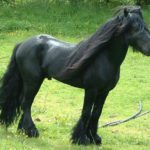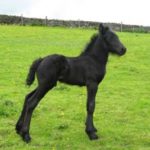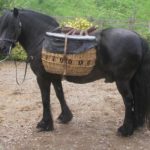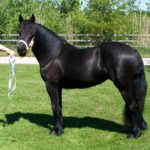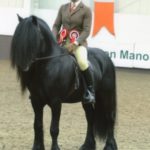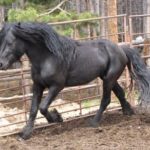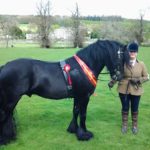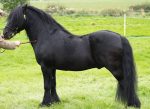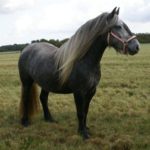Fell Pony
What is a Fell Pony
The Fell Pony is a rare English treasure, from the mountains of Crumbia. It is one of the most adaptable horses of Mountain and moorland pony breed, which can sustain even in harsh climate.
Fell Pony Pictures
- Fell Ponies
- Fell Pony Foal
- Fell Pony Images
- Fell Pony Jumping
- Fell Pony Pictures
- Fell Pony Showing
- Fell Pony Stallion
- Fell Pony Stud
- Fell Pony
- Fells Pony
Quick Information
| Temperament/Personality | Steady, lively, alert, intelligent and independent |
| Height | 14 hands (approx.) |
| Weight | Unknown |
| Physical Traits | Hardy with a strong flat bone; small head; broad forehead; large nostrils; prominent and intelligent eyes; neatly set ears; proportionate neck length, moderate crest and sloping shoulders; |
| Color | Black, brown, Chestnut, bay and Grey, / white marking on or below the hind fetlock ( excess white marking is eligible for registration but discouraged by the breeders) |
| Popular Traits | Reliable jumpers, sturdy built and feathered legs |
| Common uses | Pleasure Riding,Pack-Work, and Shepherding |
| Health problems | FPS (Fell Pony Syndrome), commonly occurring in the foals of this breed. |
| Gaited | Regular, sure-footed with hock and knee action |
| Ancestors (Bloodlines) | Dales Pony |
| Feeding/ diet | Pasture, hay (grass), vitamin supplement, free-choice minerals, and probiotics |
| Country of Origin | Cumbria, England |
| Breed registry/Association | Fell Pony Society ·Fell Pony Society of North America |
The Fell Pony Dressage Video
History and Development
Fell Ponies are the descendants of the ‘Galloway Pony’ (an extinct horse breed), that was also responsible for developing the Dales Pony. It is believed that this breed dwelt on the border between England and Scotland since the time of the Romans.
When the Romans occupied the England-Scotland border, several foreign breeds, crossed with the Celtic ponies were instrumental in developing the Fell Pony alongside other British breeds.
Their ability to survive in the tough terrain of the fells, made them efficient working horses, used for transporting wool and other farm goods. The hardy stature of this breed made them be used as pack horses by the Vikings for pulling sledges, ploughing and riding. They continued to be used as pack ponies in postal services and other facilities even in the 20th century owing to their remarkable speed.
However, there was a decline in its priority as other feasible medium of transport was chosen because of the uneven topography along with lack of suitable roads and canals.
Breed registration details
1898: The first herd of ponies registered in the “Polo and Riding Pony Stud Book”.
1916: The Fell Pony Committee took the resolution of working as a society for the betterment of this breed.
1918: The resolution taken was executed.
1922: The Felt Pony Society restructured its guidelines, adopting liberal terms to pull in more members for supporting this breed.
1930:1940: Decrease in their number.
Post 1945: Attempts were made to increase their numbers by implementing a grading-up method.
1950s: They were used for pleasure riding.
1970: The grading up method was discontinued.
However, with successful breeding strategies, their numbers rose gradually with the ponies being registered to the Society, whose stud book is published on a yearly basis. Though half of the ponies were of brown color in the previous stud books, over the time, black has become the primary color, with gray, bay and brown following.
Interesting Facts
- Members of The Fell Pony society were invited to celebrate the birth anniversary of Her Majesty’s 90th Birthday at Windsor Castle, where 128 ponies and riders showed up.
- The organizers raised £ 1.2 million for Her Majesty’s Birthday celebration, and its major portion was spent on the arrangements for Fell Pony and their riders.
- The Fell Pony was once used in mining areas like Ashington, where they used to go even under the mines to carry out the materials.


